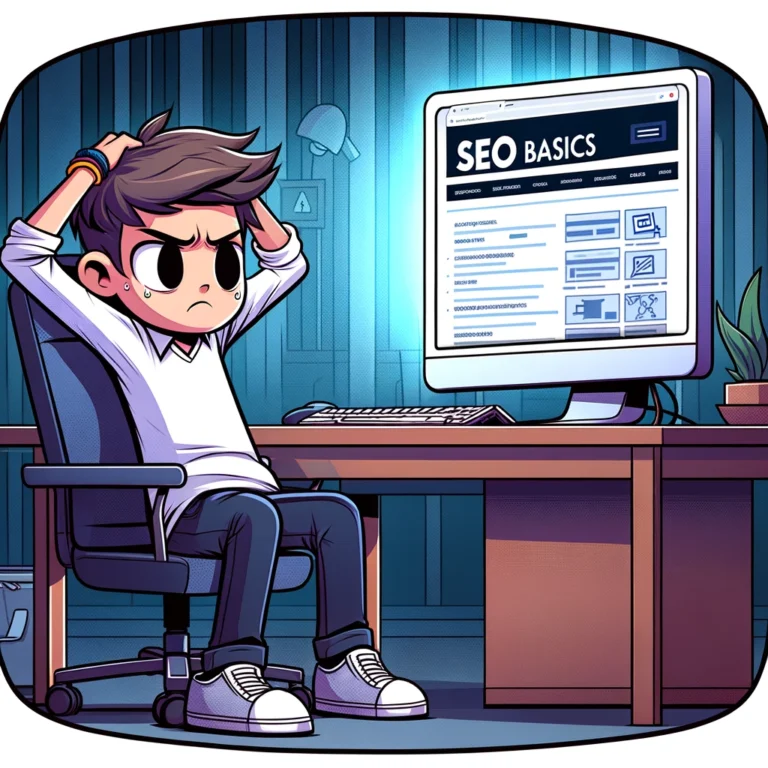In the fast-evolving world of digital marketing, staying apprised of the latest search engine optimization (SEO) trends and tactics is not just an advantage—it’s essential. As search engines like Google continue to refine and update their algorithms, DIY SEO enthusiasts and professional marketers alike must evolve their strategies to maintain visibility and effectiveness. Let’s dive into some practical tips on implementing and monitoring your SEO efforts to ensure you’re not just keeping up, but staying ahead.
Understanding the Basics: What’s New in SEO?
Before we discuss keeping your SEO strategies updated, it’s crucial to understand what changes might occur and why they matter. Search engines aim to provide the best user experience, swiftly adapting to new technologies, user behaviors, and online environments. These changes can affect how your website is seen and ranked.
Implementing SEO: Making Adjustments
The initial step towards staying updated is to implement current SEO best practices. This includes providing high-quality content, ensuring your website is mobile-friendly, optimizing your site speed, and secure website browsing with HTTPS. These fundamental elements remain pivotal, but how they are optimized can change based on new data and trends.
Content is King, But Context is Queen
While content is king has been a long-standing mantra, the context now rules the roost. Search engines now prioritize context to understand user intent more deeply than ever before. Ask yourself whether your content not only informs but also answers the questions that users are likely to have. Tailoring your content to answer these questions more completely will help you gain an edge.
Mobile-First Indexing
With the predominance of mobile browsing, search engines now prioritize mobile versions of websites over desktop versions in their indexing and ranking. If your website isn’t optimized for mobile devices, you’re likely to slip down in ranking. Ensure your site has responsive design elements that adjust smoothly to different screen sizes.
Site Speed
User experience begins when your page loads. Enhancing site speed is a non-negotiable element of modern SEO practices. Tools like Google’s PageSpeed Insights can help you analyze your site’s performance and suggest practical improvements.
Secure Sockets Layer (SSL)
Security is a top priority, not just for users but also from an SEO perspective. Implementing SSL, a security protocol that creates encrypted links between a web server and a browser, is essential. Sites with SSL are marked secure with HTTPS in their URLs, instilling trust and better search rankings.
Monitoring Your SEO Efforts
Just implementing SEO tweaks isn’t enough; monitoring their effectiveness holds equal importance. Tracking metrics such as page ranking, website traffic sources, and visitor engagement over time can provide deep insights into what’s working and what’s not.
Tools of the Trade
Utilizing tools like Google Analytics and Google Search Console can offer exhaustive data about your website’s performance. These tools can help you understand how visitors arrive at your site, how they interact with your content, and how your pages rank in search results, allowing you to refine your SEO strategies effectively.
Regular Audits
Conduct SEO audits regularly to ensure that your website complies with the latest search engine guidelines and best practices. This involves checking your site’s adherence to SEO fundamentals like proper use of tags, optimized images, URL structure, and internal linking. Regular audits also help identify broken links or obsolete content that could degrade your site’s SEO performance.
Stay Educated and Adaptable
Finally, the key to maintaining robust SEO strategies lies in continuous education and adaptability. SEO is not a set-and-forget element of your marketing campaign. Engage with SEO communities online, attend webinars, follow thought leaders, and experiment with new tools and strategies. As search engines evolve, so must your tactics. In the ever-changing landscape of SEO, those who keep pace with new developments not only avoid losing ground but can also capitalize on new opportunities. Whether you’re a small business owner trying to increase your online presence or a blogger looking to reach a wider audience, these strategies are crucial.

Staying Ahead: Advanced SEO Practices
While keeping up with basic updates and monitoring your efforts is crucial, diving into advanced SEO practices can further boost your online visibility and engagement. The digital realm never remains static, and neither should your SEO strategies. Here’s a glimpse into some sophisticated techniques that can sharpen your competitive edge.
Semantic Search Optimization
As search engines become smarter, they start to understand the nuances of language better, mimicking human understanding. Incorporating semantic SEO involves optimizing for the true intent behind user searches rather than just injecting keywords. This includes using related terms, synonyms, and answering related questions within your content to cover a topic more comprehensively.
Voice Search Optimization
With the rise of AI assistants like Siri, Alexa, and Google Assistant, voice search is becoming increasingly popular, altering the SEO landscape. Optimizing for voice search involves focusing on longer, more conversational queries and ensuring your local SEO is impeccable, as many voice searches are location-based. Structuring your content to directly answer questions can position your site as a primary source for voice search answers.
Artificial Intelligence and SEO
AI is not just transforming devices and applications but SEO too. By leveraging AI tools, you can analyze user behaviors, customize content recommendations, and automate mundane SEO tasks like keyword research and data analysis. Embracing AI can lead to more dynamic and responsive SEO strategies that are attuned to real-time changes in user behavior and competitive dynamics.
Integration with Other Marketing Efforts
SEO shouldn’t exist in isolation but should be a part of a broader digital marketing strategy. Integrating your SEO practices with social media marketing, email marketing, and content marketing can amplify your reach and influence. For instance, using insights from SEO to guide your content creation can ensure that your marketing messages hit the mark across all channels.
Ethical SEO
In the rush to rank higher, it’s essential to stick to ethical SEO practices, often termed as ‘white hat’ SEO. This includes avoiding tricks intended to deceive search engines, like keyword stuffing and link schemes. Not only do these practices risk penalties from search engines, but they can also damage your reputation. Focusing on ethical strategies and high-quality content fosters trust and reliability among your audience. By harnessing these advanced techniques, you can ensure that your SEO strategy is not just current but cutting edge. As you implement these practices, remember that SEO is about the long game—quick fixes might not yield sustainable results. Keep learning, keep testing, and keep optimizing to stay ahead in the dynamic world of SEO.
Mobile-First Indexing Strategy
The shift towards mobile-first indexing by search engines underscores the necessity of having a mobile-optimized website. Mobile-first indexing means that Google predominantly uses the mobile version of the content for indexing and ranking. To adapt, ensure that your site’s mobile version contains the same high-quality content as the desktop version, including text, images, videos, links, and structured data. The user experience on mobile should be seamless, with a responsive design and fast loading times. By prioritizing mobile optimization, you can improve your site’s usability and search engine ranking, effectively reaching a broader audience in our increasingly mobile-driven world.
Conclusion
Embracing mobile-first indexing is no longer just an option but a necessity in today’s digital landscape. As mobile usage continues to surpass desktop, ensuring your website caters to mobile users isn’t just about staying ahead—it’s about staying relevant. Focusing on a responsive, fast-loading, and content-rich mobile site will not only align you with Google’s indexing preferences but also enhance the user experience. Remember, a mobile-optimized website is your gateway to engaging a modern audience effectively. By prioritizing these elements, your site will not only climb in search engine rankings but also win the loyalty of your mobile-first customers. Keep adapting and evolving, and your digital presence will thrive in this mobile-centric world.
References:
- Fishkin, R. (2020). SEO 101: Learn the Basics of Search Engine Optimization. Seattle: SparkToro.
- Hocksenar, T. (2021). “Strategies to Adapt to Google’s Ever-Changing Algorithms.” Journal of Digital Marketing, vol. 4, no. 2, pp. 34-42.
- Patel, N. (2019). How to Keep Up with SEO in 2020 and Beyond. Retrieved from https://neilpatel.com/how-to-keep-up-with-seo/
- Moz. (2022). “The Beginner’s Guide to SEO.” Retrieved from https://moz.com/beginners-guide-to-seo
- Search Engine Journal. (2023). “Essential SEO Techniques to Master in 2023.” Retrieved from https://www.searchenginejournal.com/essential-seo-techniques-2023/
- Singh, A. (2021). “Innovative SEO Techniques: Emerging Trends.” Digital Marketing Excellence Today, vol.12, no.1, pp. 50-56.
- Sullivan, D. (2022). “How Search Engines Work.” Search Engine Land. Retrieved from https://searchengineland.com/how-search-engines-work-295572
- WebFX. (2023). “The Top SEO Trends You Need to Know to Stay Competitive.” Retrieved from https://www.webfx.com/seo/top-seo-trends/



